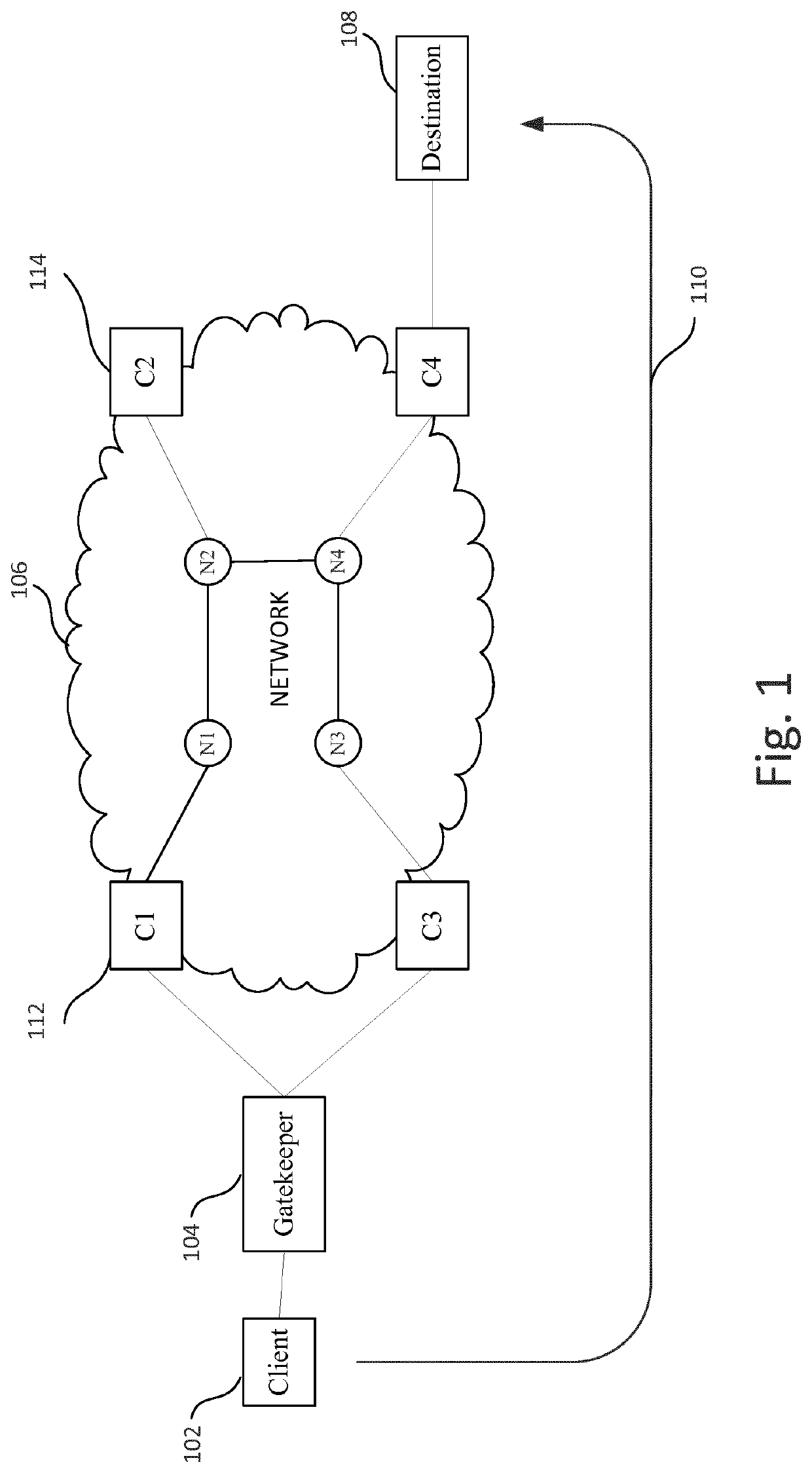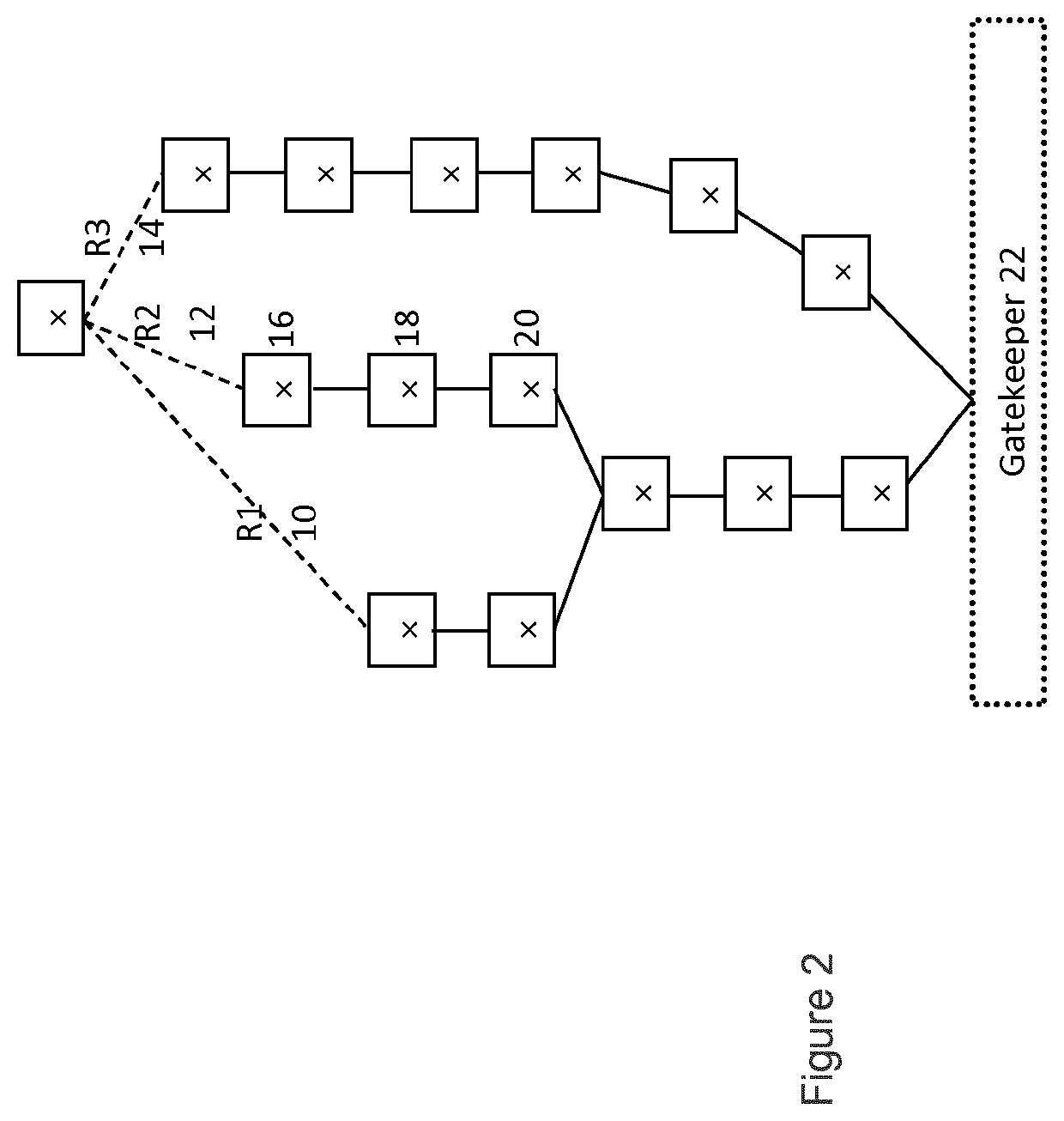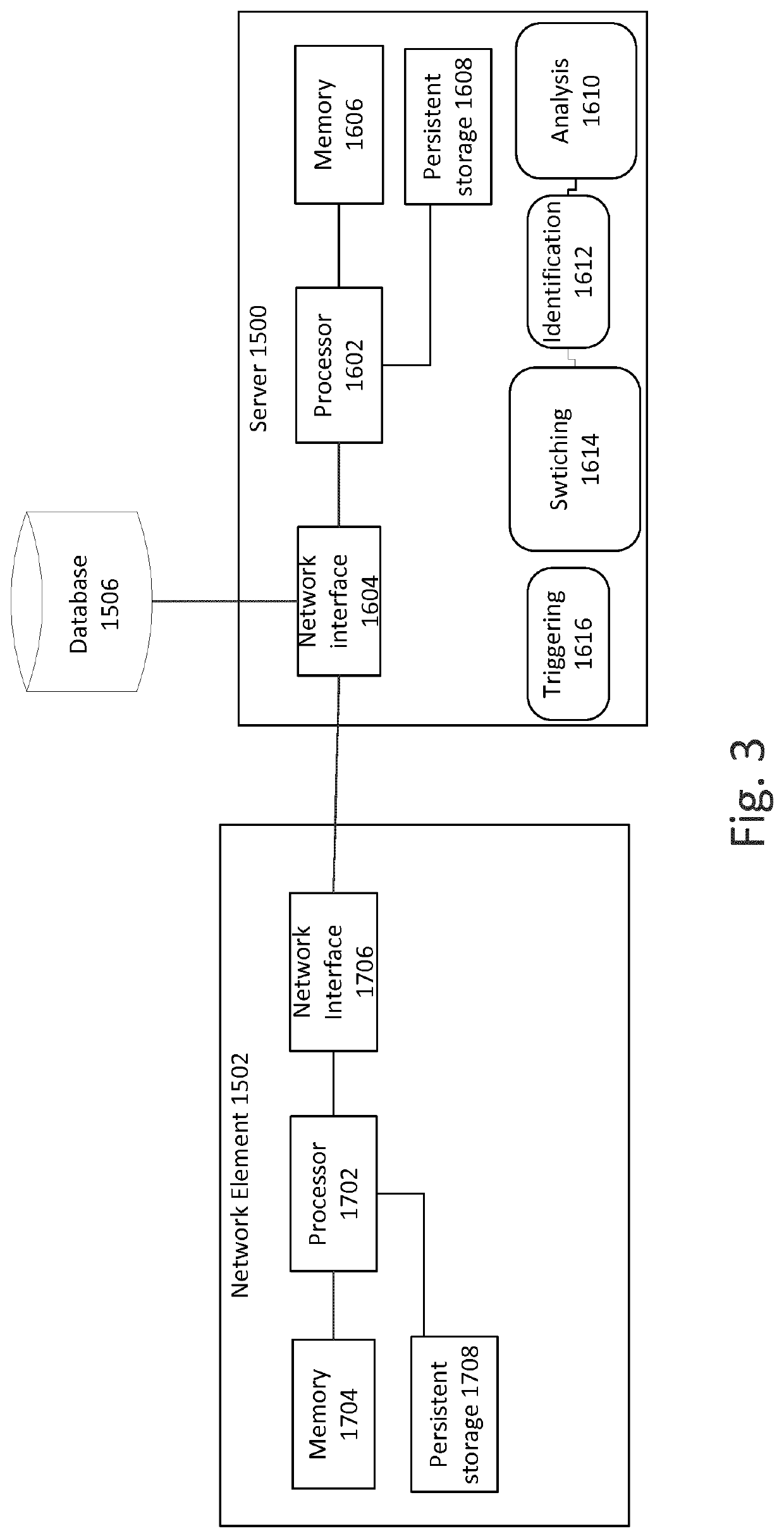Energy management in a network
- Summary
- Abstract
- Description
- Claims
- Application Information
AI Technical Summary
Benefits of technology
Problems solved by technology
Method used
Image
Examples
Embodiment Construction
[0076]By way of background, as described in more detail below, the present system may be implemented in an environment of dynamic QoS models and some of those models can be related to energy utilisation. This can enable a client to request, in their set of desired QoS models with an associated priority, the best possible energy behaviour, i.e. a route with the lowest energy utilisation that still satisfies their performance criteria. Alternatively, or in addition, an operator can enforce a priority list, one of those being energy utilisation, and prefer routes that provide optimal energy utilisation over ones that do not. This operator-enforced priority is important if the operator finds that the clients do not choose such priorities as they are likely to benefit the operator more than the client. Furthermore, an operator can choose to incorporate energy utilisation into the dynamic pricing model. It is also possible for a network operator to enforce a maximum bound in energy utilis...
PUM
 Login to view more
Login to view more Abstract
Description
Claims
Application Information
 Login to view more
Login to view more - R&D Engineer
- R&D Manager
- IP Professional
- Industry Leading Data Capabilities
- Powerful AI technology
- Patent DNA Extraction
Browse by: Latest US Patents, China's latest patents, Technical Efficacy Thesaurus, Application Domain, Technology Topic.
© 2024 PatSnap. All rights reserved.Legal|Privacy policy|Modern Slavery Act Transparency Statement|Sitemap



